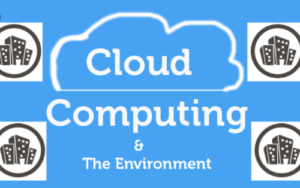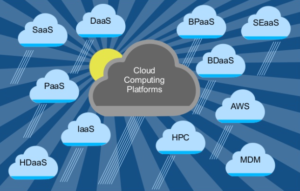To begin with, what is it?
The hybrid cloud is a combination of third-party public cloud and private cloud services, with orchestration between both platforms. By enabling workloads to move between private and public clouds, as computing needs and costs change, the hybrid cloud offers enterprises greater flexibility and more data deployment options
Although the hybrid cloud concept may give the overall idea, it is important to note that the public and private cloud environments that make up the hybrid cloud are unique and individual entities. An application programming interface ( API ) is responsible for transferring resources and workloads from one cloud to another, keeping the most critical workloads in the private cloud, and harnessing the potential of the public cloud to optimize costs.
What advantages does it have?
The phrase “the best of both worlds” often accompanies any hybrid cloud-related material, as they propose combining the benefits of public and private cloud in a single solution. Its most relevant advantages derive from its mixed nature:
- Greater control, since the organization can maintain critical workloads under private infrastructure.
- Flexibility, both due to the scalable nature of the hybrid cloud and the resources that the public cloud can provide.
- Cost optimization, you only pay for the resources that are used and when they are needed.
- Simplicity, since it is not a complete transition to the public cloud and a gradual and controlled migration can be carried out, in the stages that are necessary.
How do hybrid clouds work?
The way public and private clouds work as part of a hybrid cloud is no different from how they work independently: virtualization extracts resources and pools them in the clouds, automation software allocates these resources, and management tools they provide new environments. Private and public clouds become hybrid clouds when application programming interfaces (APIs), virtual private networks (VPNs), or wide area networks (WANs) connect the two environments as efficiently as possible.
This interconnectivity is the only way hybrid clouds work. Without it, they are just separate private and public clouds. The quality of the connections has a direct effect on how the hybrid cloud works. The most important technology for strong cloud connections is often the most overlooked: the operating system.
The consistency, reliability, and flexibility of the operating system determine the quality of connections between public and private clouds. If you use the same operating system to design your private cloud, use your public cloud, and bundle them into a hybrid cloud, your environments will be so interconnected that they will be indistinct – users will not know or care where workloads are running. However, to design a hybrid cloud like this, you have to start with the operating system.
When should I consider moving to a hybrid cloud?
No two organizations are the same and, therefore, it makes no sense to establish a recommendation without falling into generalities. Yes, it is an objective data that the hybrid cloud market is growing and more and more companies trust a solution with many advantages, but not without risks.
In this way, the person in charge of each company should consider some questions before deciding to make the leap to a hybrid cloud, whatever the infrastructure that is being used at the moment.




Howdy! I could have sworn I’ve been to this website before but after reading through some of the post I realized it’s new to me. Nonetheless, I’m definitely glad I found it and I’ll be book-marking and checking back often!
I like the helpful info you provide in your articles. I will bookmark your blog and check again here frequently. I’m quite sure I’ll learn many new stuff right here! Best of luck for the next!|